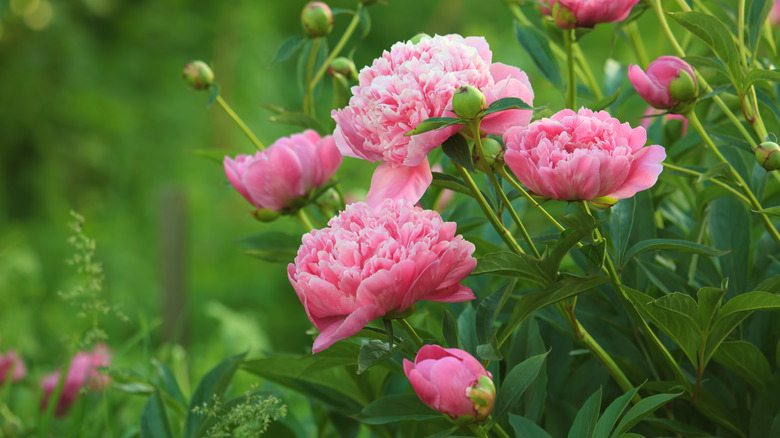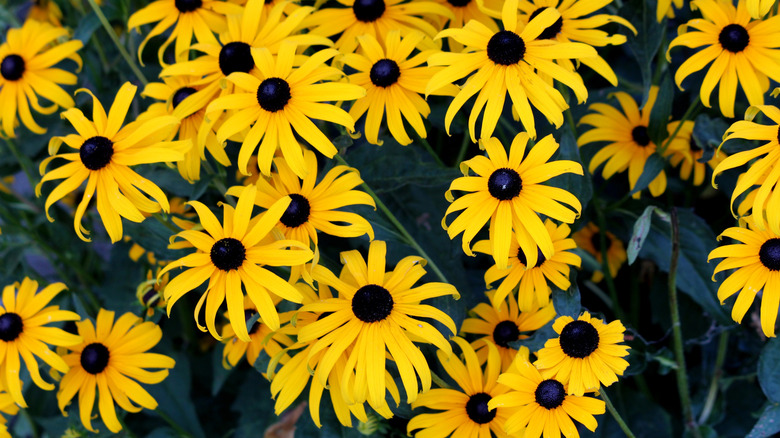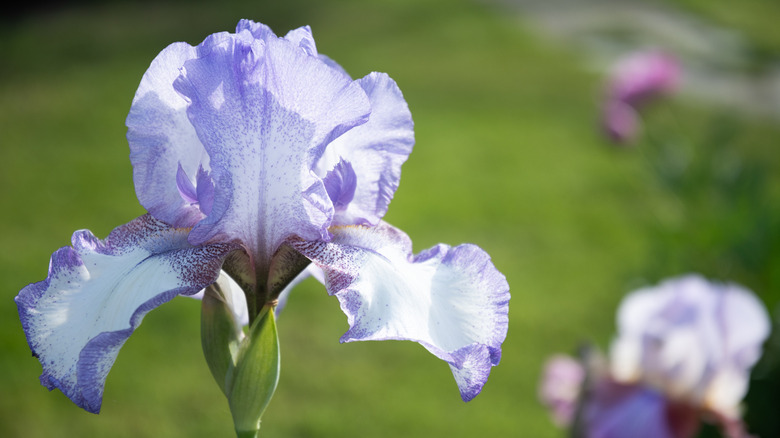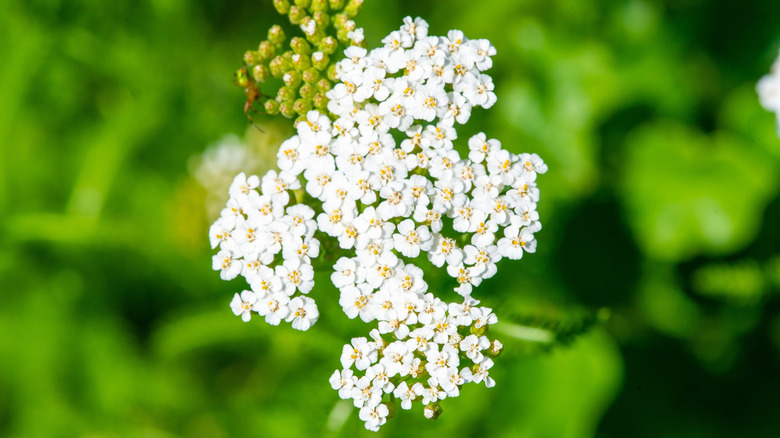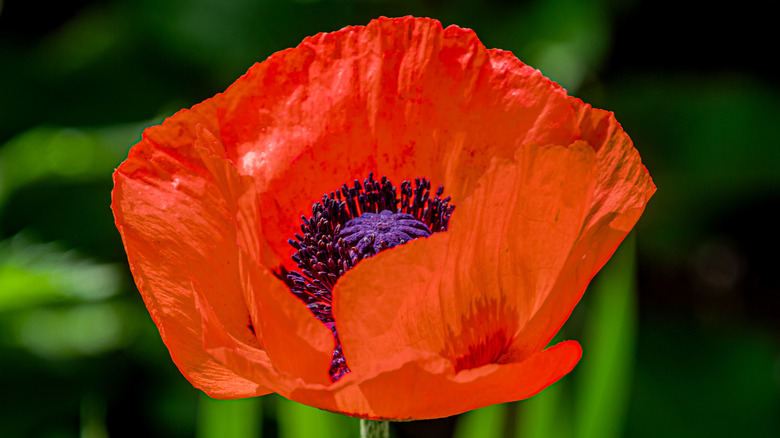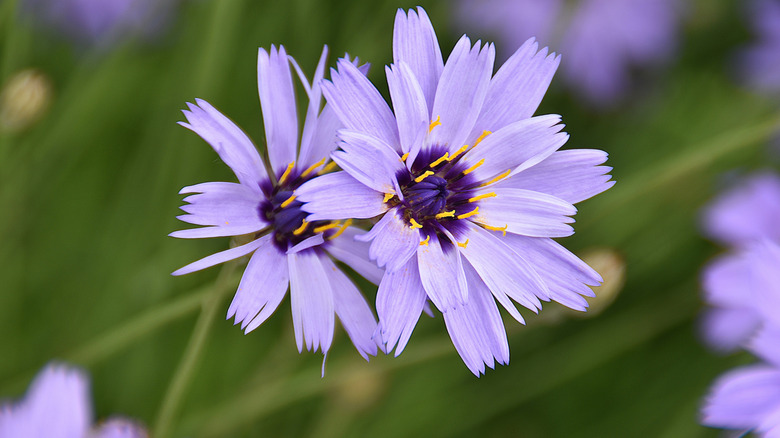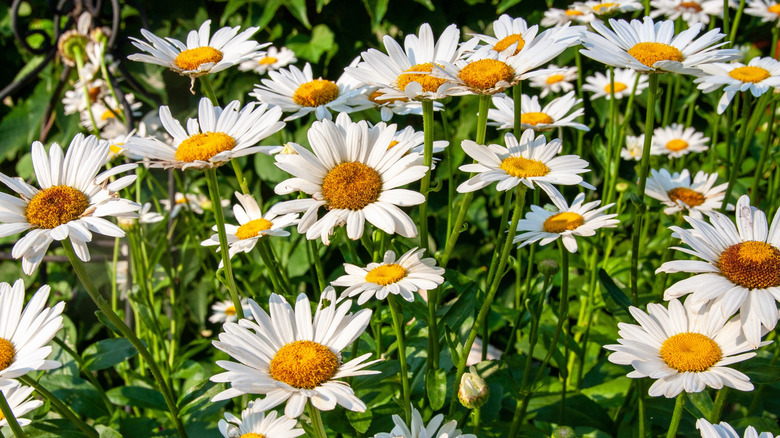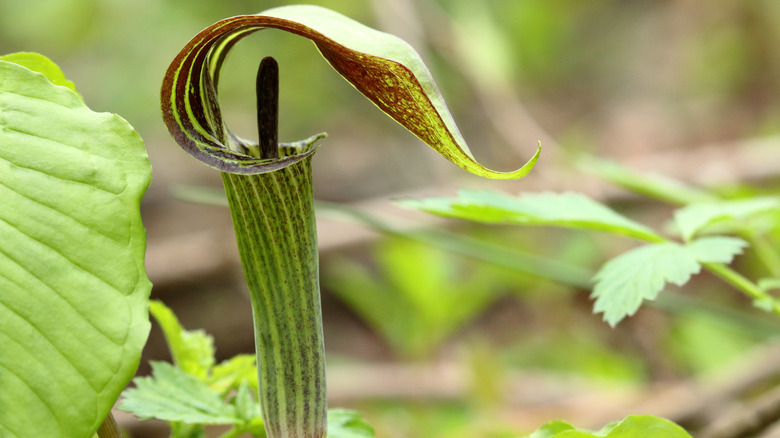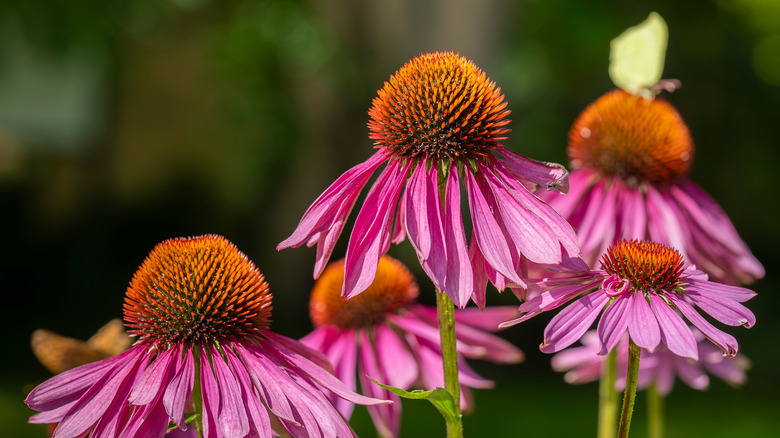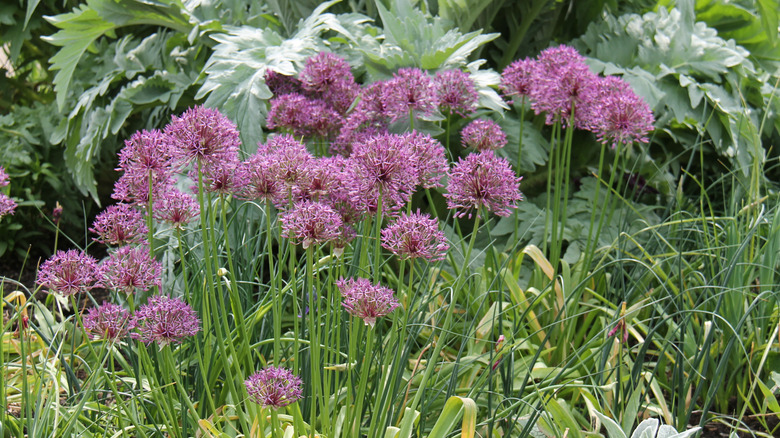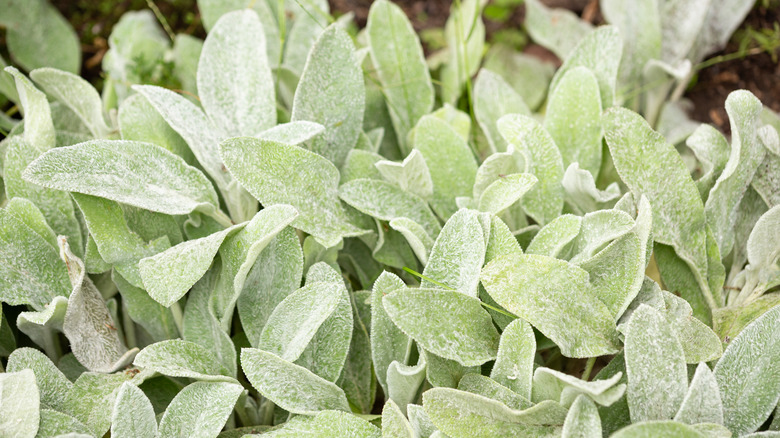12 Perennials You Should Be Dividing In The Fall For A More Abundant Garden
If you've enjoyed a bumper crop of returning flowers this summer, and you've noticed your garden beds getting a little crowded, then fall might just be the best time to divide and replant some of these common perennials. Spread the love and help out the plants as well! Count peonies, irises, black-eyed Susans, and poppies among the top perennial flowers you should divide now and replant for more flowers later.
Dividing perennials can be key to keeping them healthy. When plants get too squeezed in together, their roots fight each other for nutrients, minerals, and water, which inhibits growth and leads to fewer flowers. Also, plants with poor air circulation can develop fungal infection or disease. Don't forget to split ornamental grasses regularly as well. You'll know a perennial plant needs to be divided when it starts to look too puny or the center of the entire thing begins to wilt or die. Overcrowded plants might also fail to produce the usual number of flowers. Some fast-growing plants, like Cupid's dart or bishop's weed, might need division every year to keep them from becoming too crowded.
But not all perennials like to be divided every year ... or pretty much ever. False blue indigo and balloon flowers do not do well with being moved. Balloon flowers have delicate roots that are easily damaged, and false blue indigo grows from one long taproot that doesn't like to be messed with.
Divide and replant peonies in early fall
Divide peonies in early fall, when the soil is still warm. You might want to prune the plant first so it's easier to dig up. You can cut stems nearly down to the soil. Then, dig up some of the plant without breaking off healthy stems. When dividing peonies, include three or more eyes for each clump so that new growth will sprout from them. Peonies, perfect for USDA Plant Hardiness Zones 3 to 8, live for decades and don't need division very often. Only do it if a plant grows too large.
Black-eyed Susans might need a boost this fall
Black-eyed Susans (Rudbeckia fulgida), hardy in zones 3 to 7, might be one of the easiest to grow perennials since they grow in difficult soils. Fall can be a good time to divide black-eyed Susans as they're entering hibernation for winter. It's a good idea to divide after a good rainfall or to water the soil first so it's more pliable. The roots of these flowers form in shallow clumps, so you don't have to dig deep. Just dig far enough away from the crown to get the whole root ball.
Bearded iris can be propagated in the summer or fall
The dramatic bearded iris can be a wonderful addition to any garden. You can add more of them by dividing and propagating them either in late summer or fall. Anytime after the flowers die, usually in the middle of summer, you can begin propagating irises, which thrive in zones 3 to 10. But if summer slips by you, you can always begin dividing them in early fall. Just allow at least a month before the first frost. Bearded iris needs to be divided if it stops producing vibrant flowers.
Move hostas to another shady spot
If you want to know when to divide hostas, aim to do so every few years, either in the spring or fall. Just work on these shade-loving perennials that do well in zones 3 to 9 well before the onset of chilly weather to give the new plant time to get established before the ground freezes. This usually means September in lower zones and October in warmer zones. Add a layer of straw or mulch to newly planted hostas in the fall in the Midwest to help keep roots warm in the winter.
Bishop's weed can get crowded quickly
Bishop's weed (Aegopodium podagraria), also known as snow on the mountain, grows quickly and can even be invasive in some areas of the United States. Perfect for zones 3 to 10, Bishop's weed might need to be divided as often as every year. In this case, avoid replanting Bishop's weed. Instead, just cull some parts of the plant to keep it from taking over your garden. Bishop's weed grows so well because it will take to almost any kind of soil and isn't too fussy about the amount of sun, either.
Poppies do best divided in autumn
If you want more bright orange poppies in the yard, then look to divide the batch you have now in autumn. Some varieties, especially the Oriental poppy (Papaver orientale) and their thick roots, do best with replanting after the high heat of summer has passed. Poppies don't care for too much heat, preferring milder summer zones 3 to 7. Poppies can grow taproots as long as a foot, so be aware when digging so you don't slice into them. Each new division of a poppy really needs its own taproot to thrive.
Move Cupid's dart this fall
When it comes to Cupid's dart (Catananche caerulea), the pretty lavender or blue flower with upright overlapping petals, you can divide this plant either in the spring or in the fall, but do so every couple of years to keep this fast-growing perennial healthy. This flower loves zones 5 to 10. Cupid's dart gets its name because it was a key ingredient in love potions that Greeks and Romans used to make in ancient times. While it's not scientifically proven to attract love, Cupid's dart does attract pollinators like butterflies to the garden.
If your daisies are leggy, it's time to divide
Shasta daisies (Leucanthemum x superbum) perk up any garden, but if yours grow leggy and not quite so perky, it's probably time to divide them. The perfect time to do so will be after the blooms wilt and the leaves fall off. On a cooler, not too warm, fall day, grab your trowel and head outside to split up those daisies, which prefer zones 4 to 9. When replanting shasta daisies, pick a spot in the garden with decent drainage and at least six full hours of sun a day.
Keep Jack in the pulpit healthy
If you've got a unique Jack in the pulpit (Arisaema triphyllum) perennial growing in your yard, also known as a bog onion or a brown dragon, then look to fall as the time to propagate this unusual perennial. This flower, which prefers zones 4 to 9, grows from a corm, a root system that might look like a bulb, but it's got a different structure. Only divide an established Jack in the pulpit plant, and wait five years between each attempt. Wear gloves when you do so, as this plant can cause skin rashes.
Split coneflowers this autumn
If you love your garden's coneflowers, then waiting until late fall in moderate climates to divide and replant them might be the best strategy. When digging up cold resistant coneflowers (Echinacea angustifolia), hardy down to zone 3, inspect the roots for any sign of disease and cut away sick roots. After replanting divided clusters, don't forget to give them a nice, long drink of water . Also, don't panic if next year the new coneflowers don't bloom right away. Divided plants sometimes need a year or so before they produce their first flowers.
Divided allium will grow more dome-like flowers
Allium — the plant family that includes 700 varieties of onions from edible to ornamental – brings an interesting dash of texture with their globe-like flower clusters. Hardy in zones 4 to 9, this family of perennials offers a versatile and playful addition to any garden. If you want more of them, divide and replant these hardy growers this fall. Let the flowers die off on their own. Then, dig up the bulbs of a cluster of allium and divide them with your fingers. Replant them in a sunny or partially shady spot.
Get more soft lamb's ear by replanting when weather cools
If you love the soft greenish-silver petals of lamb's ear (Stachys byzantina) and want more of it as ground cover in your yard, then look to divide this plant during cool weather, either in the spring or fall. Be gentle with the plant's root ball as you dig. You can use a knife or even just your fingers to separate the plant's roots. Lamb's ear might be hardy in zones 4 to 9, but it's still a good idea to replant clusters well before the first freeze arrives.

